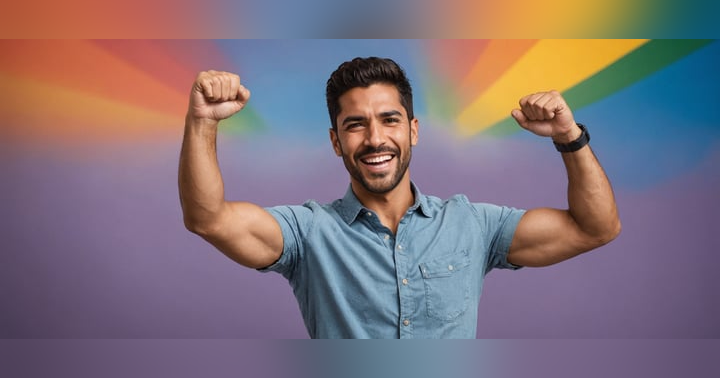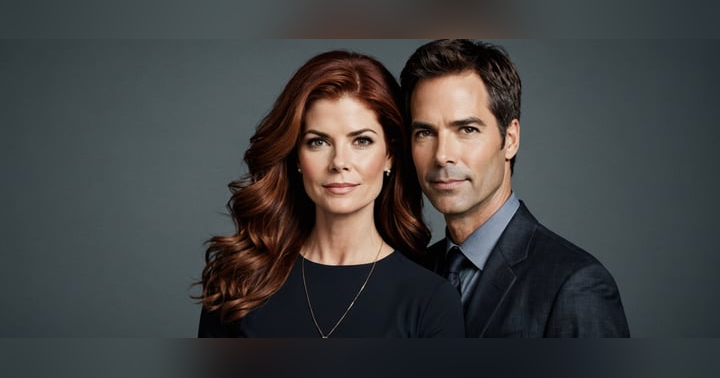Unpacking Gay Stereotypes: Why Embracing Your True Self Matters More Than Fitting the Mold

“There is No Wrong Way to Be Gay”
Stereotypes about gay men—such as the campy best friend, the partying fitness enthusiast, or the fashion-obsessed icon—are ubiquitous in media and popular culture. These portrayals often stem from some elements of truth but fail to capture the diverse and complex nature of the LGBTQ+ experience. Such stereotypes not only influence how gay men are perceived by others but also how they view themselves, creating pressure to conform to narrow expectations. At a time of political and social polarization, challenging these limiting perceptions is more important than ever.
Mike Johnson and Kyle Getz, co-hosts of Gayish Podcast and authors of You're Probably Gayish: The Truth (and Lies) Behind 17 Gay Stereotypes, have spent years exploring these stereotypes. Their work blends humor, research, and personal insights to uncover the complexities of queer identity, arguing that while stereotypes may hold a kernel of truth, they should not define the entire LGBTQ+ community. Instead, individuality and authenticity should be celebrated, and gay men are encouraged to embrace who they are, beyond the labels placed upon them.
Challenging Gay Stereotypes: Defying Expectations
For many gay men, the pressure to conform to stereotypes—whether it's the idea of being a hypersexual partygoer or a pop culture junkie—can feel overwhelming. These stereotypes often limit the range of what it means to be gay and can create feelings of inadequacy or exclusion when individuals don’t fit the mold.
Mike recalls a moment of self-doubt triggered by the stereotype of the "slutty gay man," describing, “The example I always bring up is actually a chapter in our book, and it's that you're supposed to be a slut… I really felt less than or like I was deficient somehow as a gay man because I wasn’t enjoying casual transactional sex the way that I saw in the community.” This stereotype suggests that gay men must engage in casual sex frequently, disregarding those whose experiences and desires don't align with this narrative.
Similarly, Kyle reflects on how his identity was shaped by assumptions in the workplace: “I came out in college, and right out of college, I went to work for a big company… But then they started to put me in this box as the gay one.” This example highlights how stereotypes reduce individuals to one-dimensional caricatures, limiting how they are perceived in both professional and social settings.
To counteract these expectations, it is essential to foster a broader and more inclusive understanding of queer identities—one that celebrates individuality and rejects outdated assumptions about who gay men should be.
The Evolution of Gay Stereotypes: From Tradition to Internet Culture
Stereotypes about gay men have evolved significantly over time. While older stereotypes remain prevalent, new ones have emerged, fueled in part by internet culture. As Kyle notes, “There’s kind of this new wave of gay stereotypes that include things like, gays love iced coffee and gays are bad at math, and gays can't drive… They walk fast.” These modern stereotypes often originate in online spaces, where they serve both as a form of humor and a way to categorize people in simplified terms.
However, the persistence of stereotypes is not purely accidental. Mike points out, “If writing the book taught us anything, we go through 17 chapters of 17 different gay stereotypes and then come up with a verdict of like, hey, is it true or not? And a lot of them, most of them even, have a kernel of truth. And I think that that's why they persist.” These stereotypes, while rooted in some real-world observations, often miss the broader, more diverse realities of gay experiences.
In addition to internet-driven stereotypes, media and pop culture play an undeniable role in reinforcing these portrayals. Historically, LGBTQ+ characters were restricted by the Hays Code and the Lavender Scare, which limited positive depictions and led to their marginalization. Today, as media representation has expanded, the primary portrayals of gay men still tend to follow a limited set of archetypes.
As Kyle observes, “The main character gay has to be relatable. So, they can't be too gay… And then you have the side character gays who are there for just like, jokes and comedy and to be sassy and, you know, dress real cute and talk about Drag Race.”
The Hidden Harm of Gay Stereotypes: Beyond Surface-Level Positives
While some gay stereotypes may seem harmless or even flattering—such as the assumption that gay men are more attractive or fashionable—they often create unrealistic expectations that can negatively impact self-esteem. Kyle acknowledges the pressure of the “hot gay” stereotype, noting, “The idea that gay men are supposed to be hot… sounds positive, like, ‘Oh, you’re gay, you must be an attractive person.’ But… if you don’t fit that, then you feel like you’re deficient in some way, that you’re not doing it right.”
Mike further critiques this expectation: “What if you are less than whatever that stereotype says that you're supposed to be in order to be valid as a gay person?” These seemingly “positive” stereotypes still carry hidden harms, reinforcing standards that can be damaging for those who don’t meet them.
Perhaps one of the most harmful stereotypes, however, is the idea that gay culture revolves around excessive partying, drinking, and drug use. Mike shares, “I think the most harmful stereotype… is likely that we drink and party all the time… that drugs and alcohol are the expectation.” Kyle echoes this sentiment, acknowledging how these assumptions can pressure individuals into participating in behaviors that do not align with their personal interests or values.
Navigating Stereotypes with Humor and Insight
Mike and Kyle use humor and satire to address these stereotypes in their podcast and in their book. It provides a unique tool to tackle difficult subjects while offering a sense of relief from the trauma that some members of the LGBTQ+ community may experience. As Mike explains, “Humor and satire can let you talk about these really heavy things in a way that you couldn’t if you were just wallowing in it.” Kyle adds that humor, especially in the gay community, has long been a mechanism to cope with hardship, often employed by drag queens to address both personal and collective trauma.
Their book allows them to delve deeper into each stereotype, offering not just humor but personal reflections that provide insight into how these tropes affect real lives. The transition from podcast to book format gave them more space to explore stereotypes in a way that could resonate more deeply with readers. Kyle adds, “When we do the weekly episodes, we spend enough time researching, but then we quickly move on to the next topic. The book gave us more time to dig deeper.”
Embracing Authenticity: Breaking Free from Stereotypes
The journey toward authenticity is deeply personal, especially when navigating stereotypes and labels that don’t reflect who we truly are. The LGBTQ+ community has long faced societal expectations that limit expression and impose false norms. By trusting our intuition and rejecting stereotypes that fail to fit, we free ourselves to live authentically, challenging oppressive narratives and taking back the power from limiting boxes that seek to define us.
Mike’s advice—“There is no wrong way to be gay”—echoes the importance of embracing authenticity, free from societal and community-imposed labels. Encouraging queer individuals to reject conformity and embody their individuality fosters a more inclusive environment within the LGBTQ+ community.
By increasing visibility and celebrating diversity, gay men can break free from restrictive stereotypes, contributing to a broader understanding of what it means to be gay. Ultimately, the ongoing commitment to authenticity and the celebration of diverse identities will ensure that harmful, narrow definitions of gay identity are left behind for good.
And remember: every day is all we have, so you've got to make your own happiness.
For more information on this topic, listen to Episode 139. You’re Probably Gayish (with Mike Johnson & Kyle Getz).
Tune into your favorite podcast player every Tuesday for new episodes of A Jaded Gay.


















